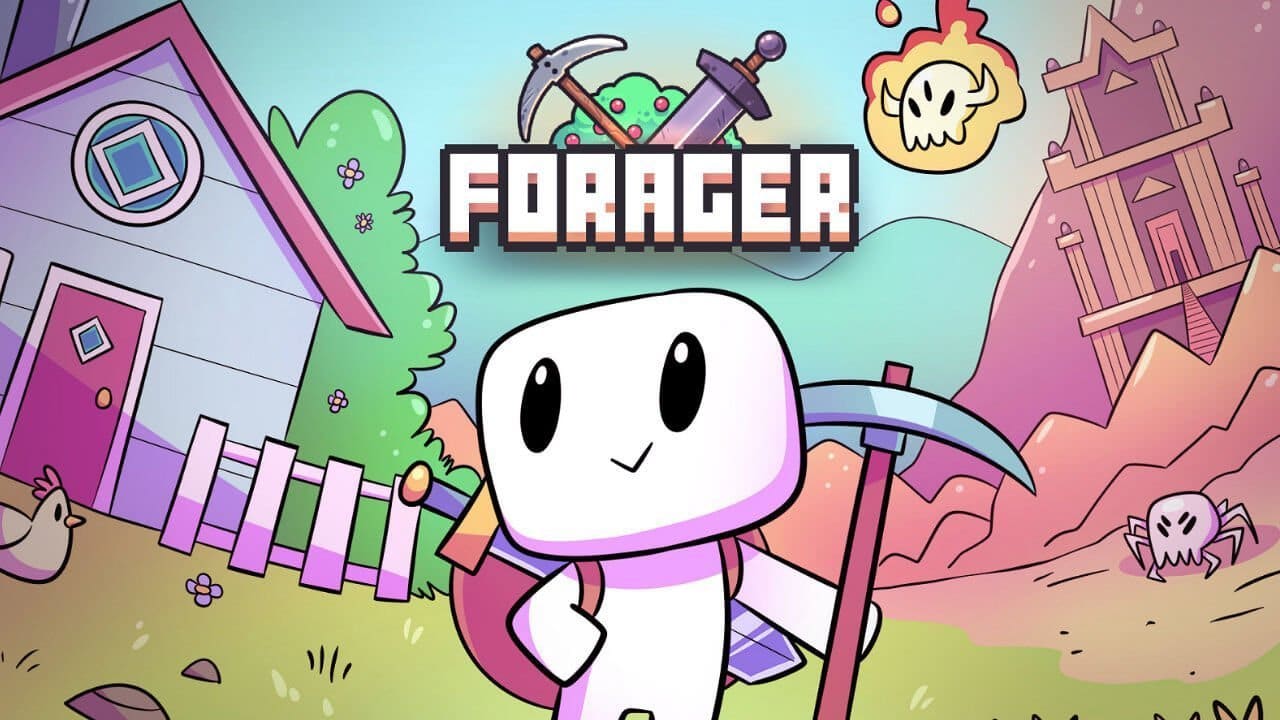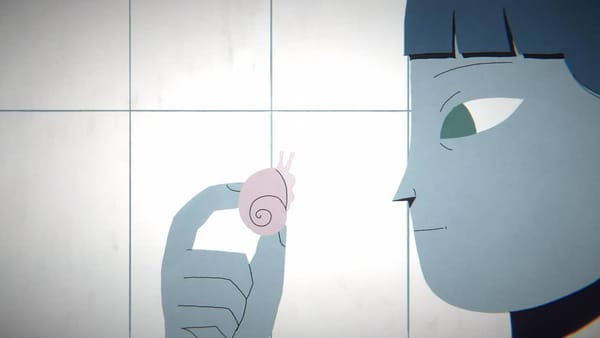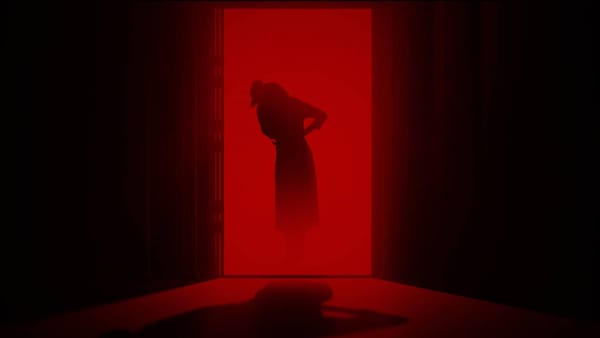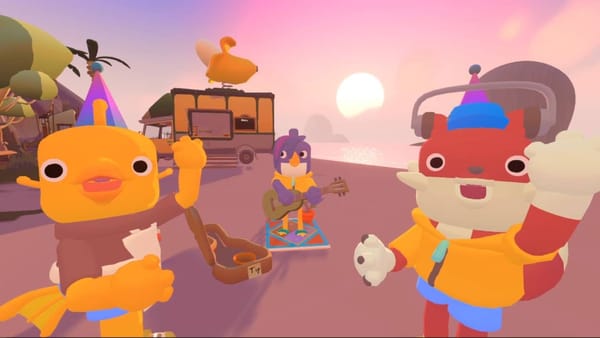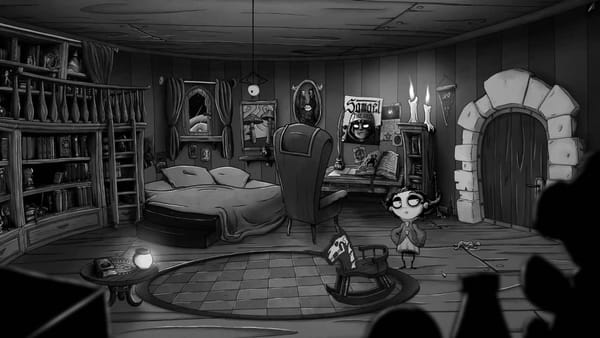An interesting point: it was my daughter who wanted this game, not me. We were going through the eShop to see what was coming out or on sale and she was incredibly bored. All of a sudden, she points out at a little icon for a game called Forager and asks to see the trailer. We both watch it, and it looks ok, but not for me. Nonetheless, I agree to get her the game when it comes out.
True to my word, I got Forager a couple of days after release and gave it a go. I just wanted to test it to see what it was like before handing over the baton to her. Two hours later I was still playing it. Long story short, I have been bedridden for the past month, so any sort of distraction was good. The thing is, I had no concept of the time as I was immersed in the game from the outset.
Almost four hours later I’m still playing the same ‘test run’. Thankfully I was on my own at the time, so not being pestered for a turn. So why was I so absorbed in the game? Well, it’s a bit of a grind fest and entirely open-ended. There aren’t conventional missions to complete but a series of tasks to finish however you wish. Forager is a sandbox type game.

Pixel Art? On the Nintendo Switch?
Surprise, surprise, this is a pixel art game. I should expect this by now, but visuals are immediate and are likely the first thing you’ll notice. You play a little white sprite that looks like the results of Fez and one of those kodama from Princess Mononoke having had a baby. Very cute. Colours are vibrant, character designs are pretty good considering the lack of detail, and it has a very nice appeal to it.
You begin on a small island, and it is suggested to build a furnace. Now, this isn’t a tutorial, and in all honesty, you could probably bypass this and do whatever you want instead, though it’s a good starting point. The furnace and also the forge are fundamental structures you build early on to craft items or materials – whatever it is you are constructing at the time.
A bit of a fusion of Minecraft, Stardew Valley and Zelda (more on that later), you harvest (or forage) materials to craft something new. For example, you can cut down trees to build bridges, rocks to collect coal and gems and harvest materials such as fiber which can be used to make threads for clothing and constructing glass bottles.
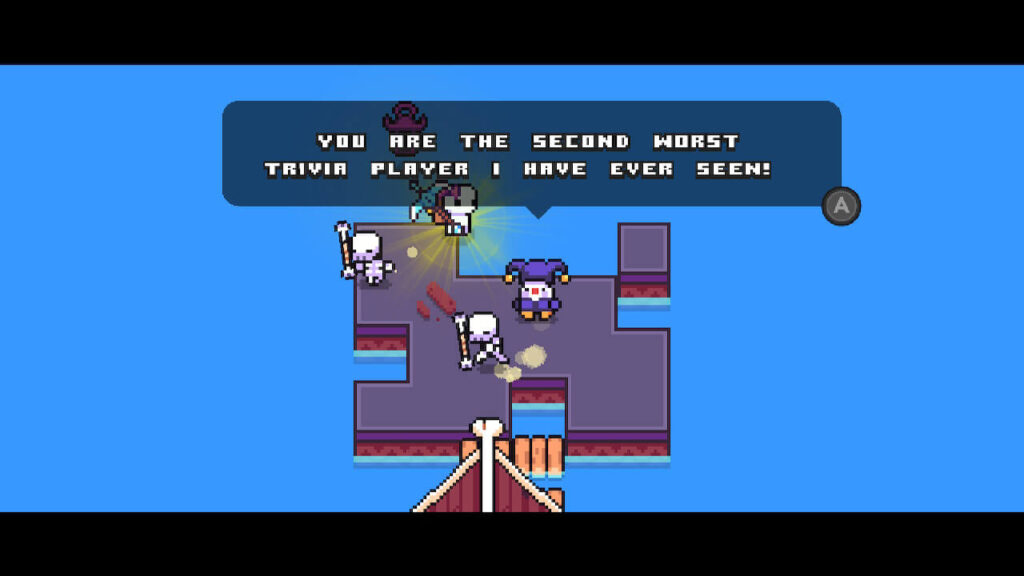
Welcome to the Grind House
The first steps would be to upgrade your main tools, which is the pickaxe, shovel and bow. Further on, you can upgrade your clothing, which doesn’t change your appearance but can improve attack power and movement speed. However, as you progress, you unlock a wealth of new items to customise your character. From fedoras to sombreros, butterfly wings to quivers – there’s a lot to choose from.
Even better, there are quite a few cameos from other games such as Shovel Knight, Limbo and Super Meat Boy. At the time of writing, I haven’t unlocked everything, but each new item is always fun to tinker about with. Some of them even grant perks such as the skeleton mask that stops skeletons attacking you.
Forager is going to take time though and one of the main reasons why I was so involved in the game. You will find you need to craft quite a few items to get anywhere and sometimes that either means exploring and discovering the items or crafting your own. More importantly, you need to have the structures to craft the items in the first place.

You Can Go Your Own Way
Returning to the sandbox style of play, it is entirely down to you how you wish to play. There is no urgency in the game, so on this basis, I found it very relaxing and I could do everything at my leisure. Your character has health – in the form of hearts, which can later upgrade to a maximum of 10, so if attacked, your health with go down. When it goes to zero, it’s game over. Interestingly though, you return to the same spot with the same items and stats as when you died. A bit peculiar really as you don’t really die.
As well as your health, you have an energy bar in Forager. Much like Stardew Valley, your energy drops when you forage. There is no sleep mode in the game or resting spots. Instead, you replenish your energy through the food you can collect. You can also cook some of these ingredients to fill the gauge better.
With your health and energy taken into account, you don’t need to engage with that many enemies, and when you do, combat is almost effortless. There is the option to craft a sword, but even late in the game, I’ve never had a need for it. The pickaxe or bow are more than adequate though you can later build droids who will attack enemies for you. Some artifacts follow you around, such as lighting up dark areas or attacking skeleton or demon mobs.

Skills and Feats
Through foraging and crafting new items, you acquire XP. As with all XP based games, once you level up, you have the option to unlock a skill. There are 64 in all, and each one will benefit you based on your style of play.
Examples include improving your commerce skills so that you can unlock more coins. Coins will buy you new items when you unlock the market, but in principle, you’ll need to use the coins to purchase new lands. Lands bring new challenges, obelisks to get you a temporary buff and also a potential new resource. Again, you don’t need to expand at first if you don’t want to so you could unlock skills in the farming area – a 50% increase in fishing speed or gaining more materials from cutting down trees – there are many options available.
Feats are achievements. Talk to all the NPCs or mine a large crystal – these are the types of challenges you will see, and in turn, these unlock the new items to customise your appearance. This translates to the main menu as there are a lot of unlockable rewards such as Forager comics, artwork, the soundtrack and more importantly, the history of the game. Very much worth a look as soon as possible to appreciate the game even more.

Enter the Dungeon
With these new lands, you will find a few dungeon type areas, not too different from a Zelda game. They are quite short-lived, but you will find yourself in a maze, fighting a boss-type character or solving a puzzle or two to unlock new goodies. There isn’t too much focus on these areas as the main game is of course crafting (and grinding).
Some of the puzzles in Forager are quite difficult and not remotely logical. You can, of course, skip them (which I did on occasion), but the rewards are usually worth it. I must admit a couple were a little tricky that I looked up a solution on YouTube. While I thought this game was out at the same time across all platforms, it’s been available on PC for some time, so there is an accumulation of videos that saved the day.
While it’s not difficult to collect a resource or craft it, sometimes it’s a simple case of locating the item in the first place. Early in the game, I found that I needed bone and I couldn’t locate or craft it. However, after purchasing a few lands, I eventually bought a land infested with gravestones and within a matter of minutes had more than enough supply. This also applied with sourcing sand. It took an age, but once I upgraded my shovel, I had more than enough.

So, What Do I Think?
I’ve covered most of the game above. Not all of it of course – I still haven’t finished it. To get a few screenshots for this review, I was going to play for 20 minutes or so – perhaps an hour tops. Four hours later, I was still playing it but levelled up quite a bit. That’s the joy of Forager.
Despite the rewards, it can seem neverending at times, what with the grinding and no real purpose to the game other than the experience. I’m a fan of this and am thoroughly enjoying the game even in the later levels. As you progress with some of the harder puzzles, you are awarded a seal to confirm you have completed it. There’s no benefit to play, but it’s quite enjoyable to see that I have unlocked almost all of them – a small sense of achievement.
You’ll know by now that I look a good old grind, and Forager is undoubtedly a grind. The rewards are very tangible though, and it’s rare to get stuck. If you can’t craft the item you want, then you craft another and come back to it. In fear of being influenced by the earlier unlockables, there is an insight into how this game was made. It’s uplifting and made me appreciate the game more, but without it, I would still love this game.

I see myself playing this for a few more weeks as I near completion. That said, there is a roadmap on the menu indicating that there will be a lot of upcoming DLC. According to the developer, this will all be free. Taking that into account, once the DLC is available, I’ll be playing this again for months on end. Forager is surprisingly one of the most enjoyable games I’ve played so far this year, and if you can do with the grind and not have a driven narrative/purpose, hopefully, you’ll love it too.


